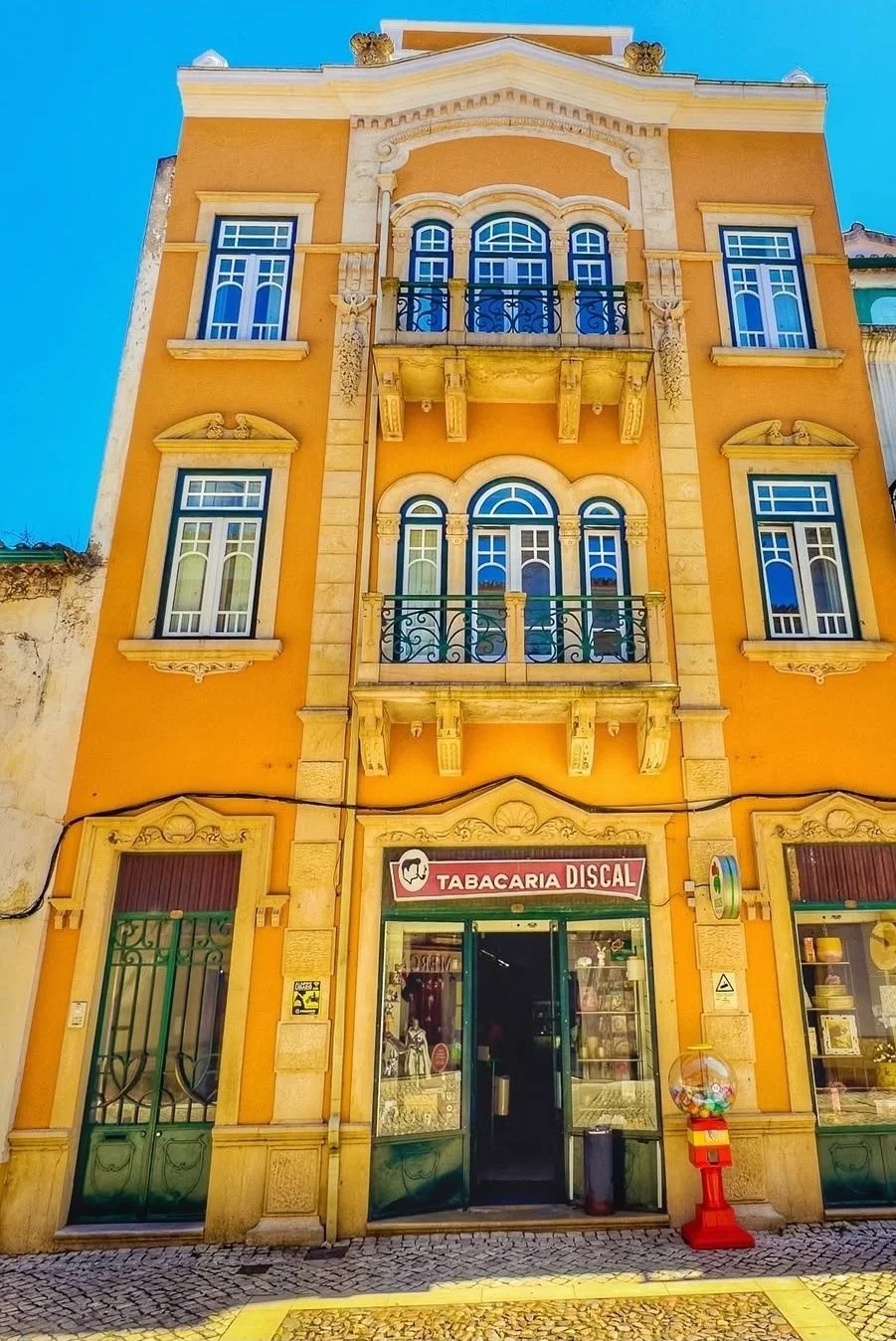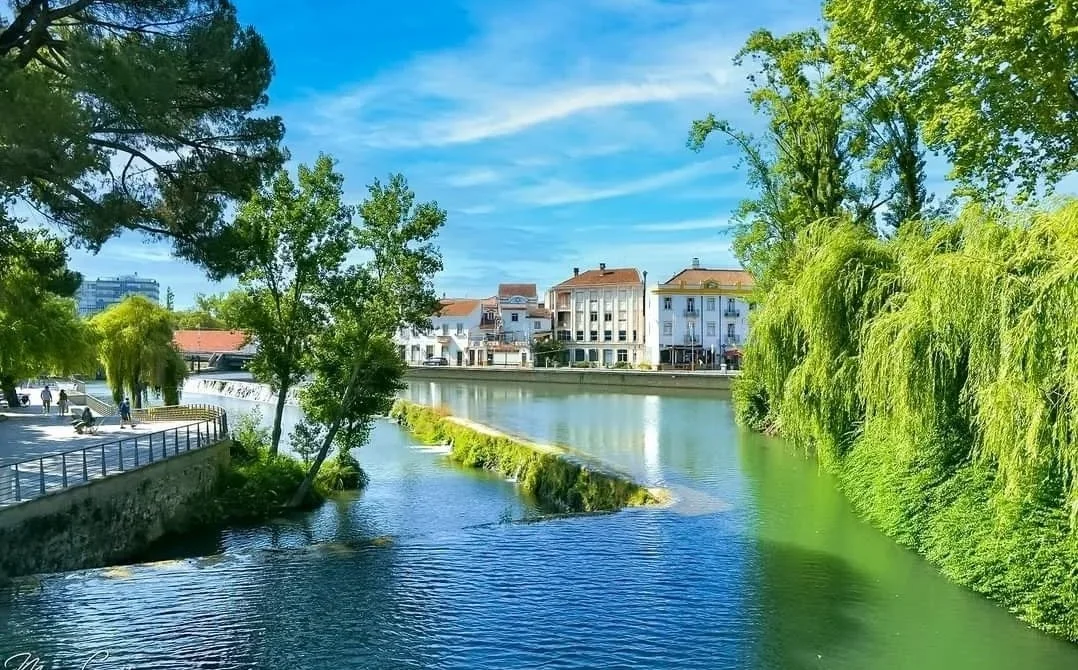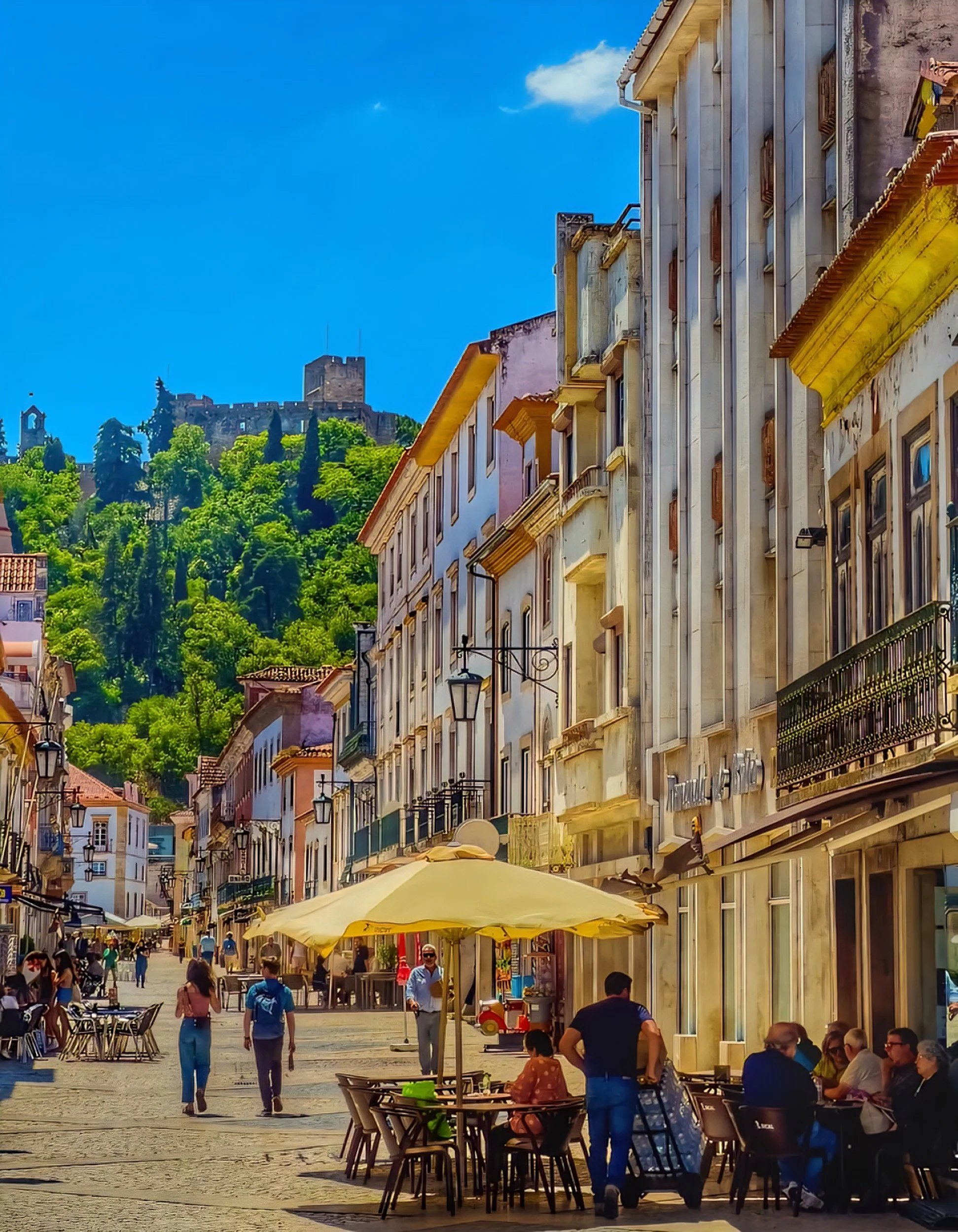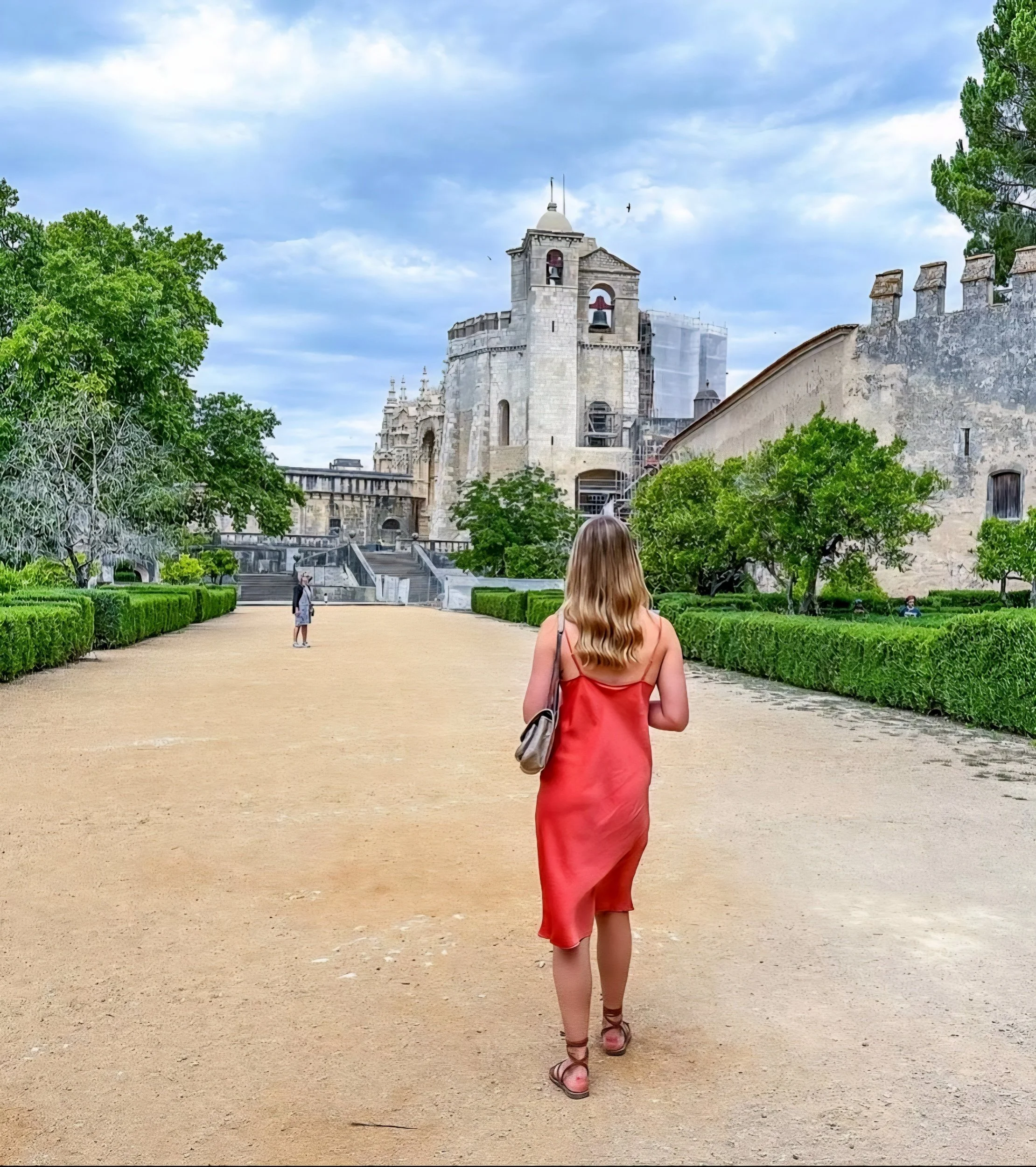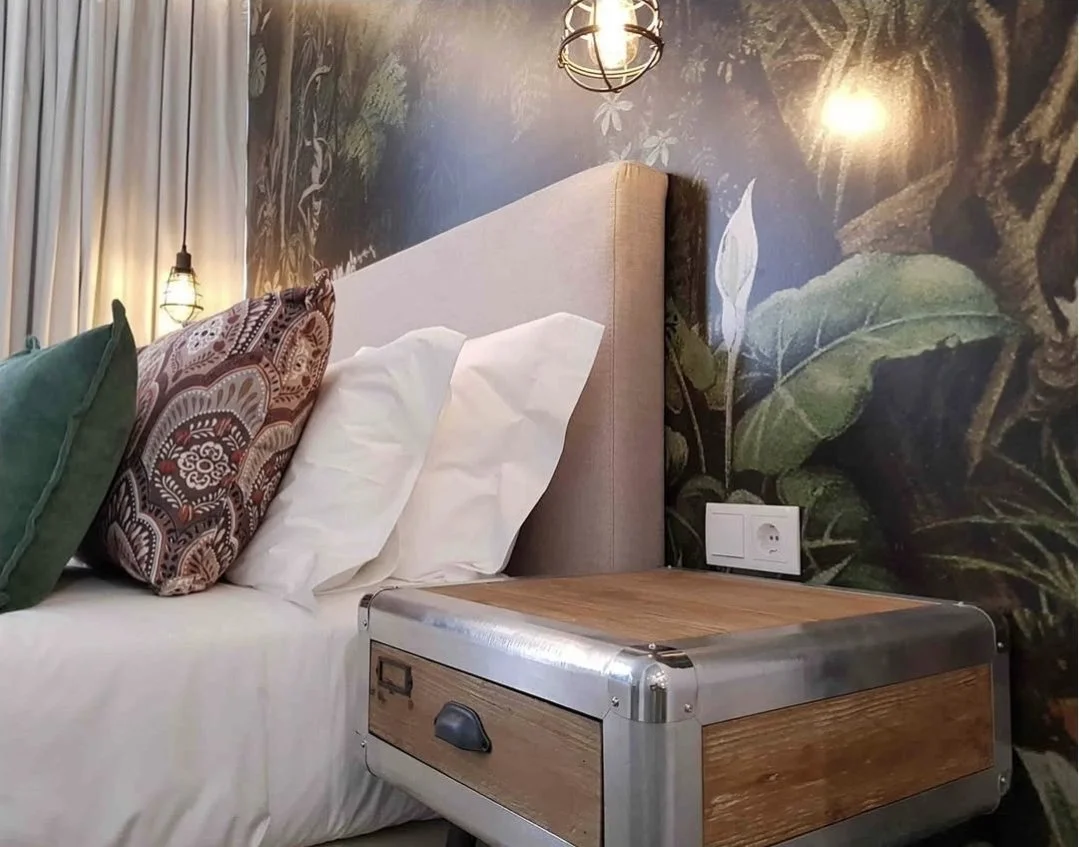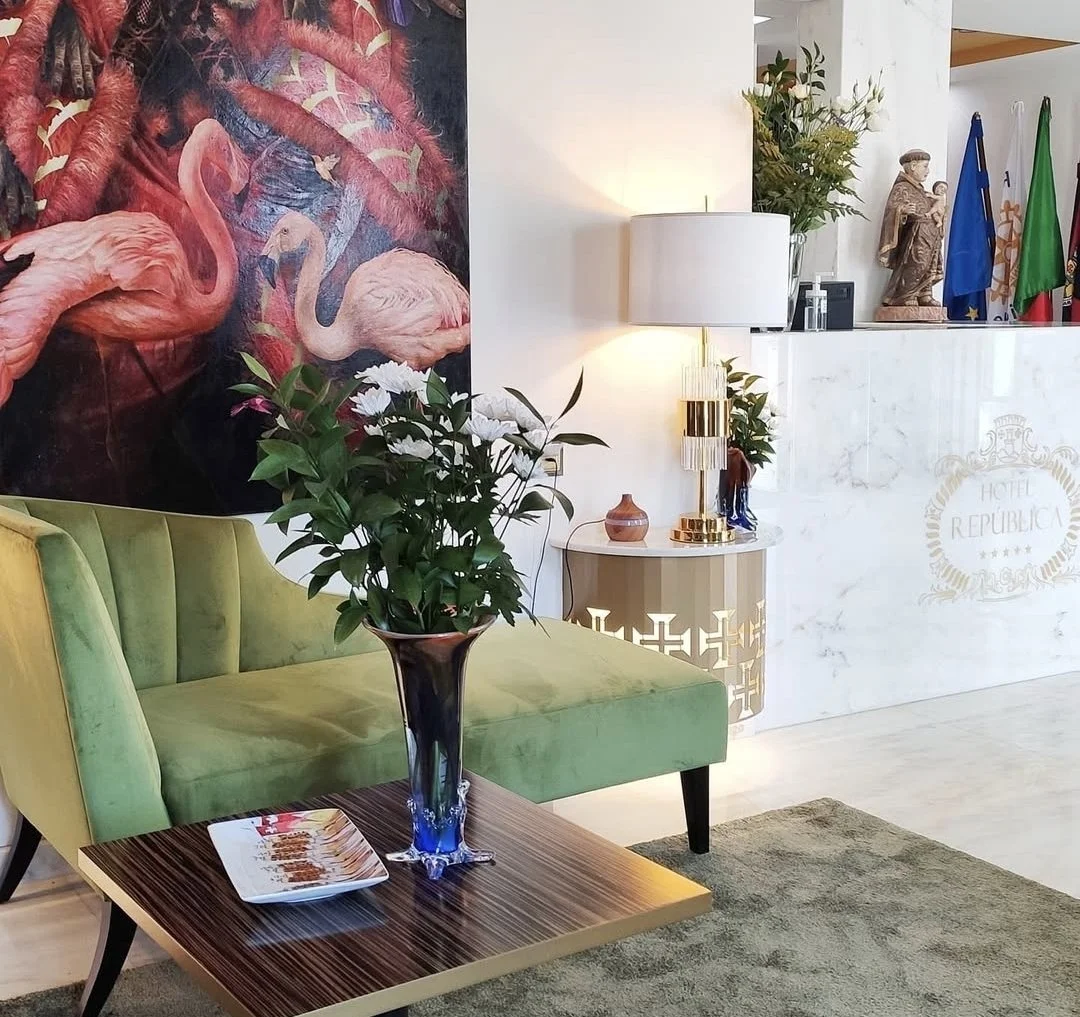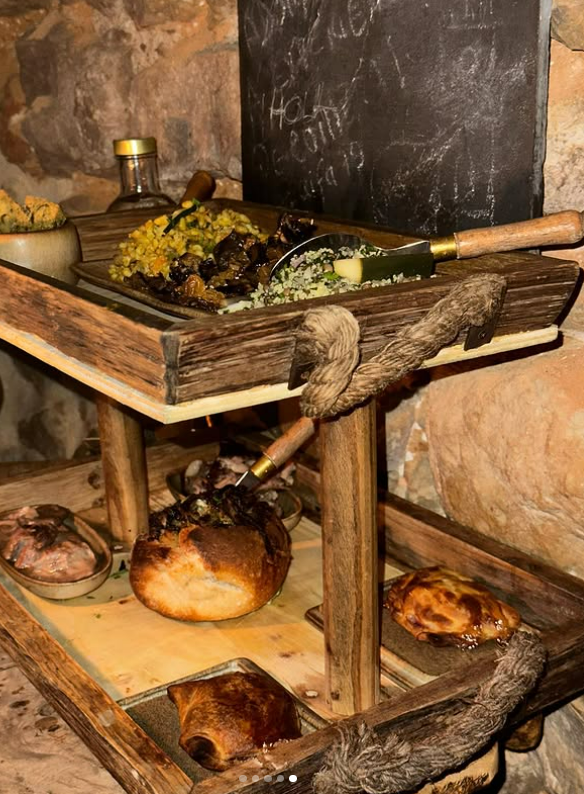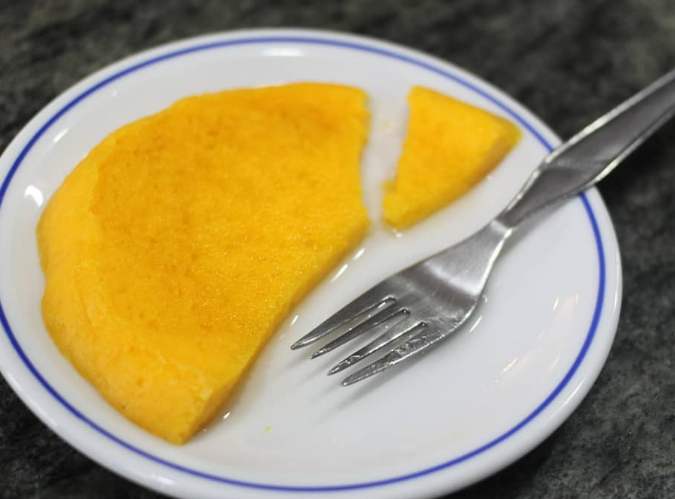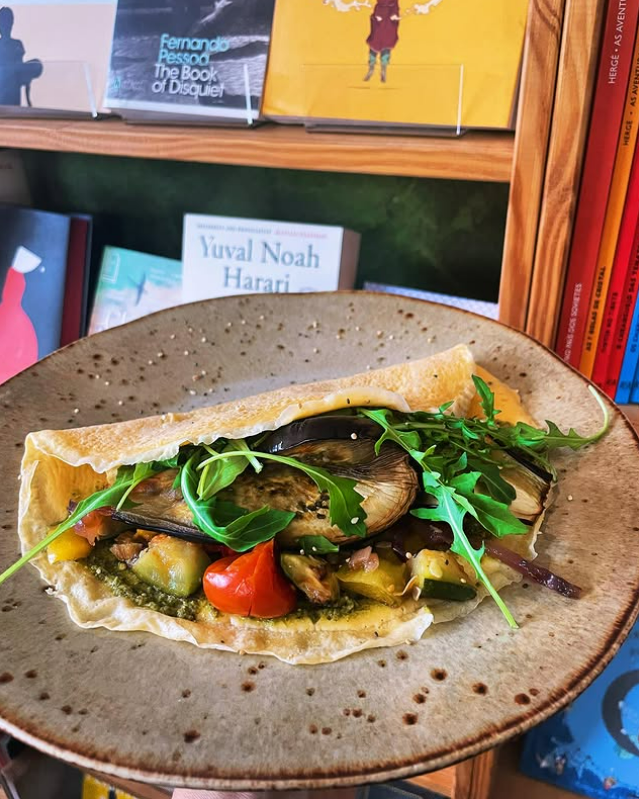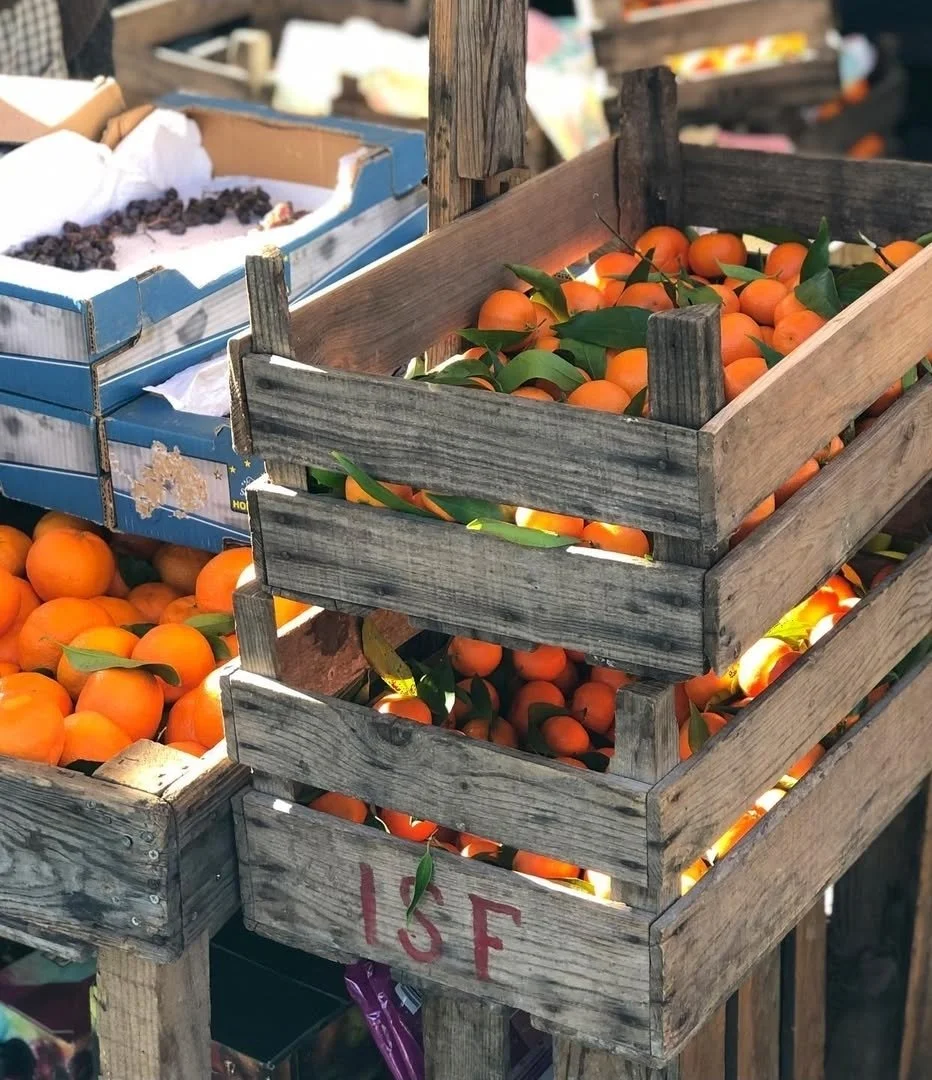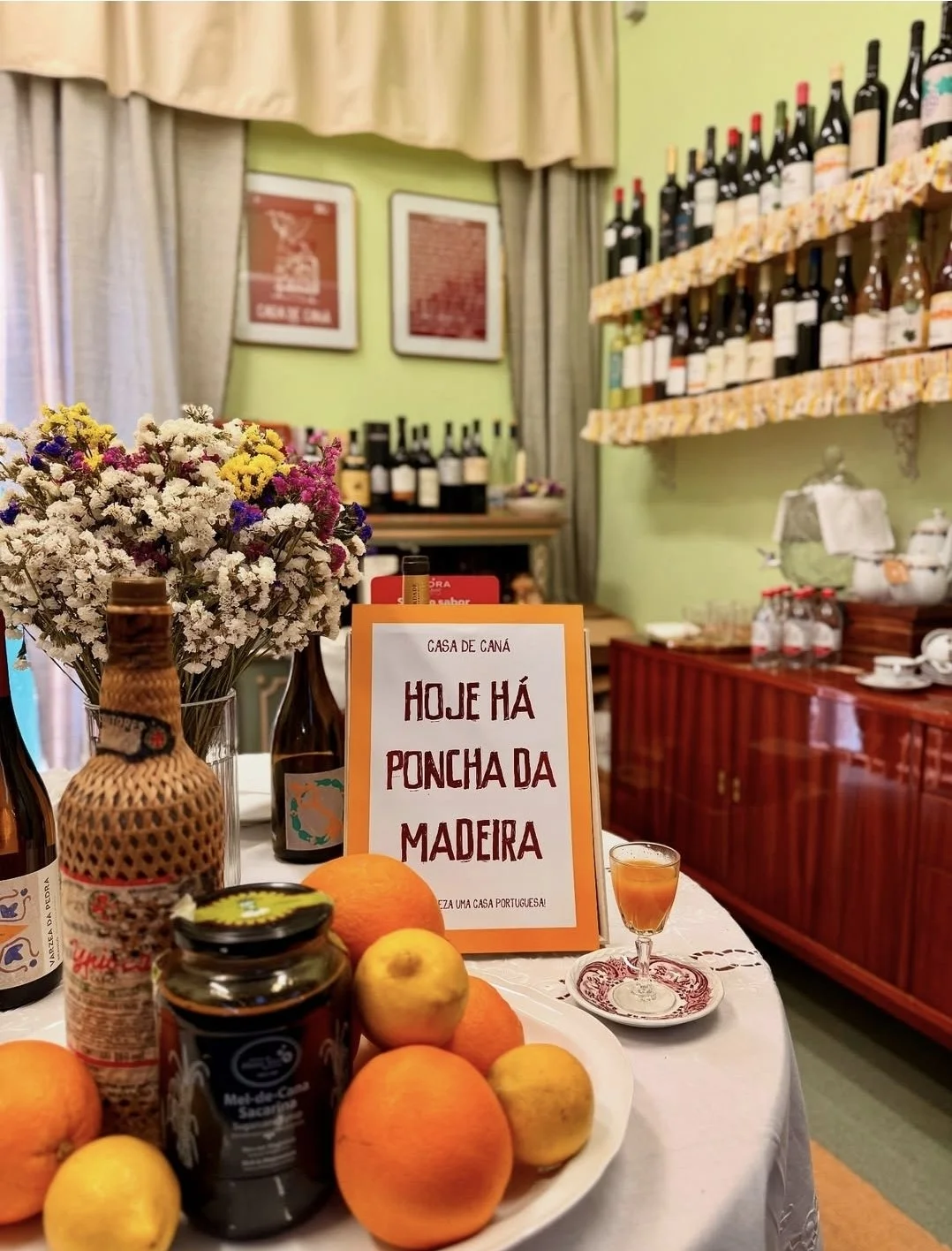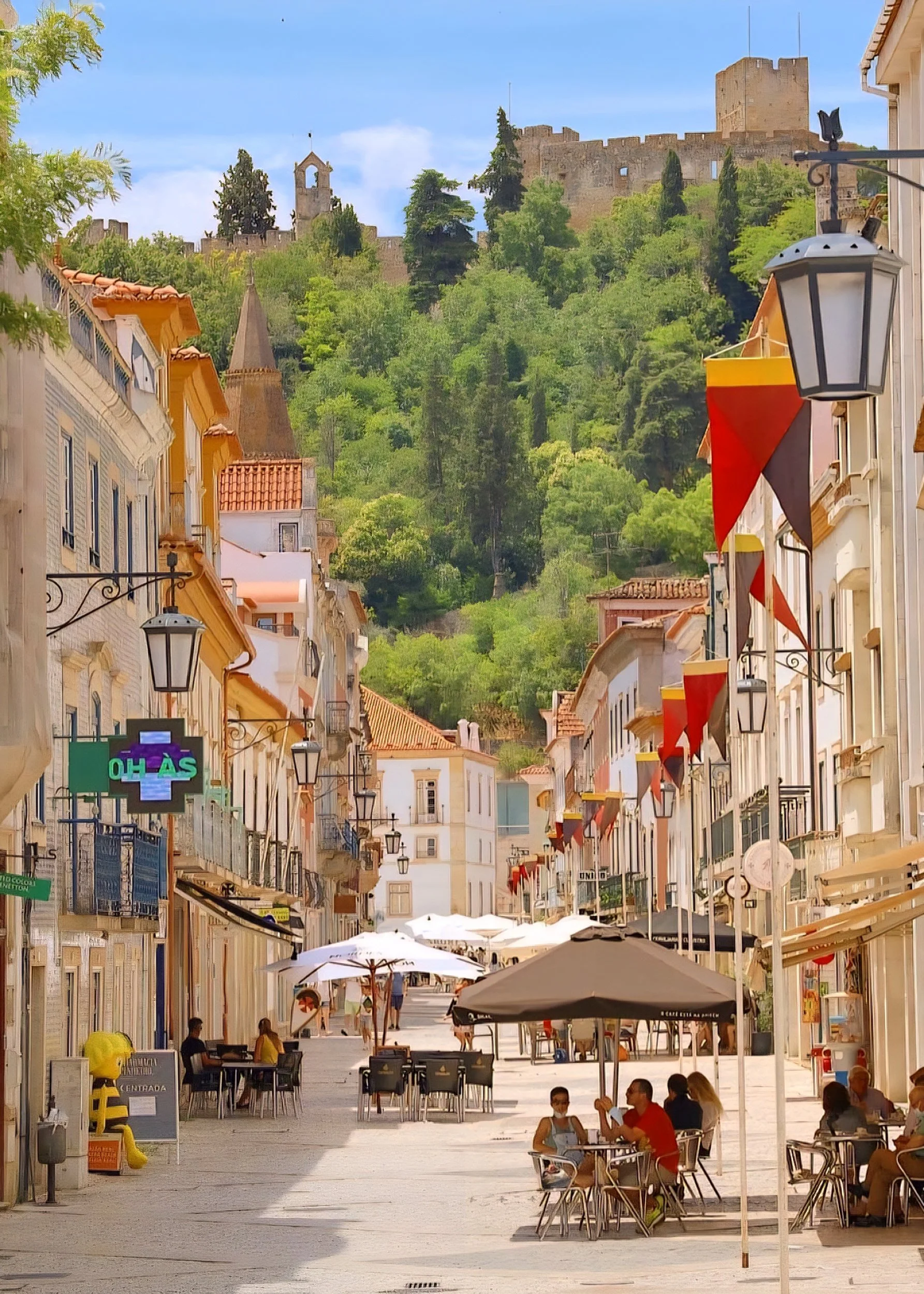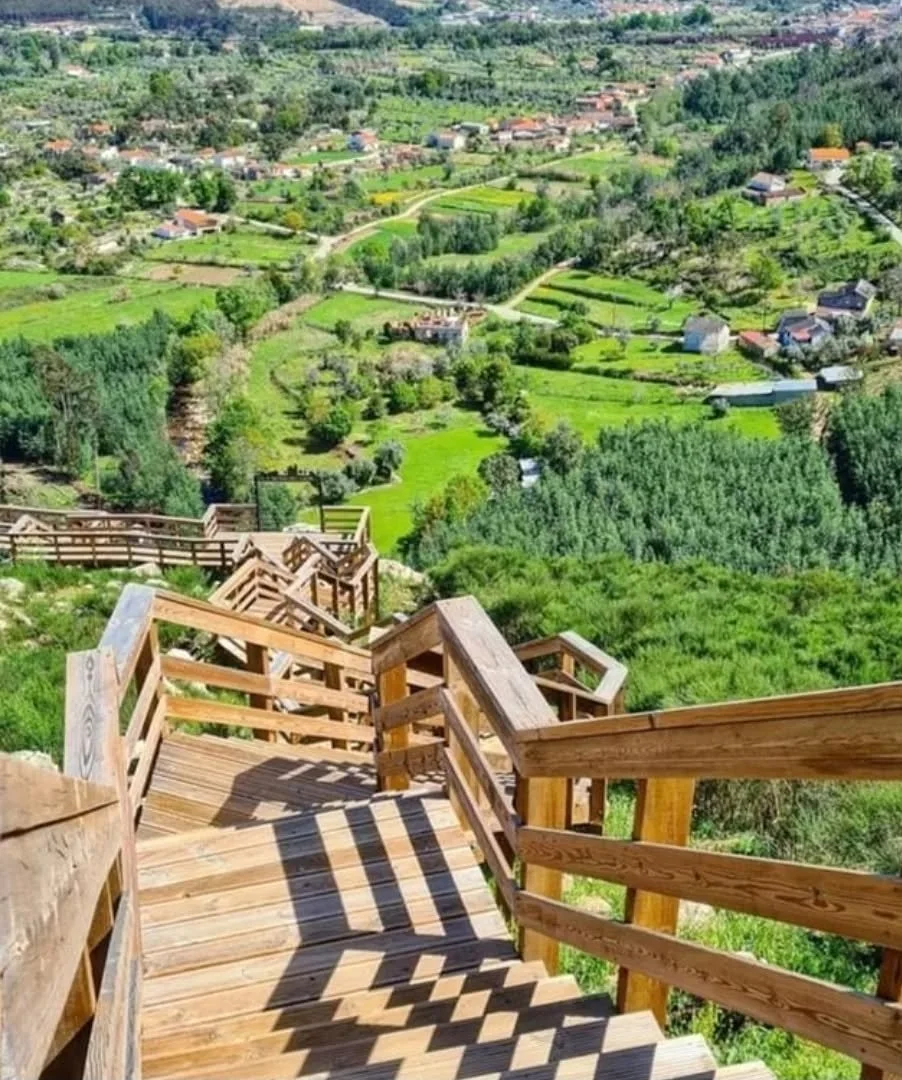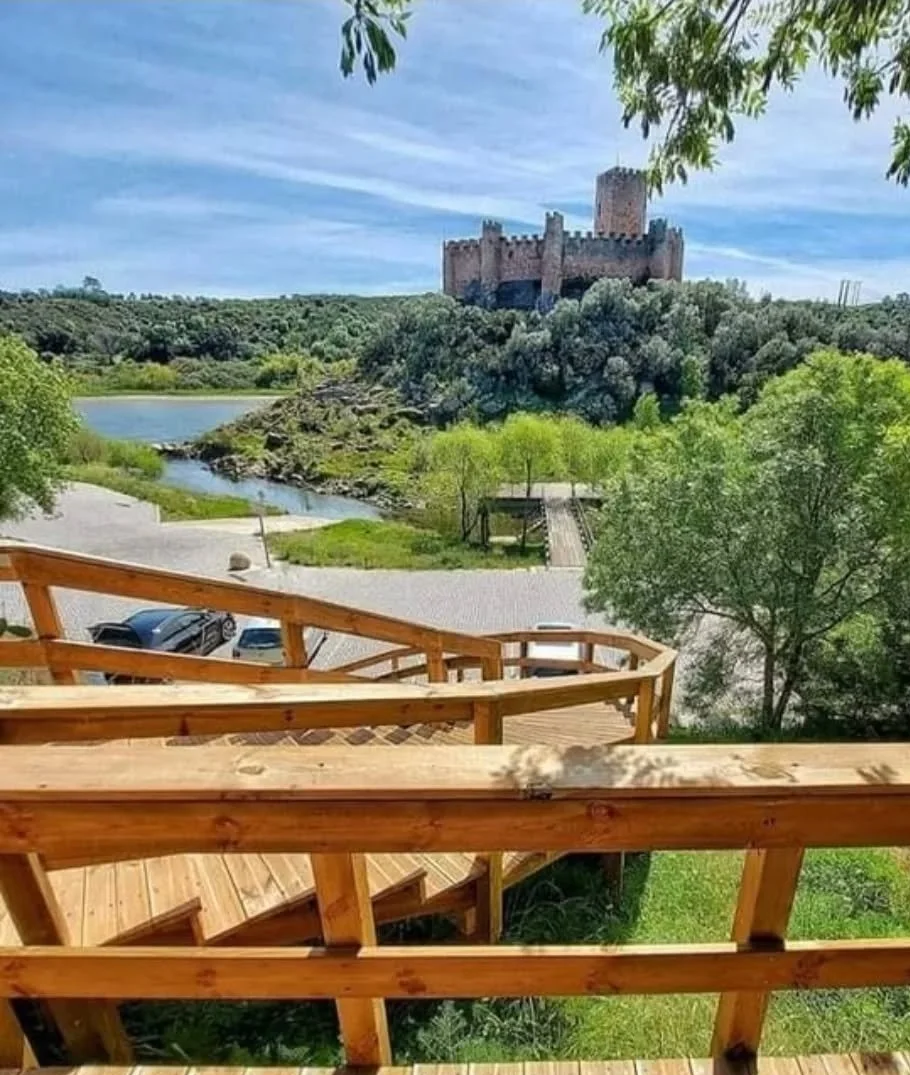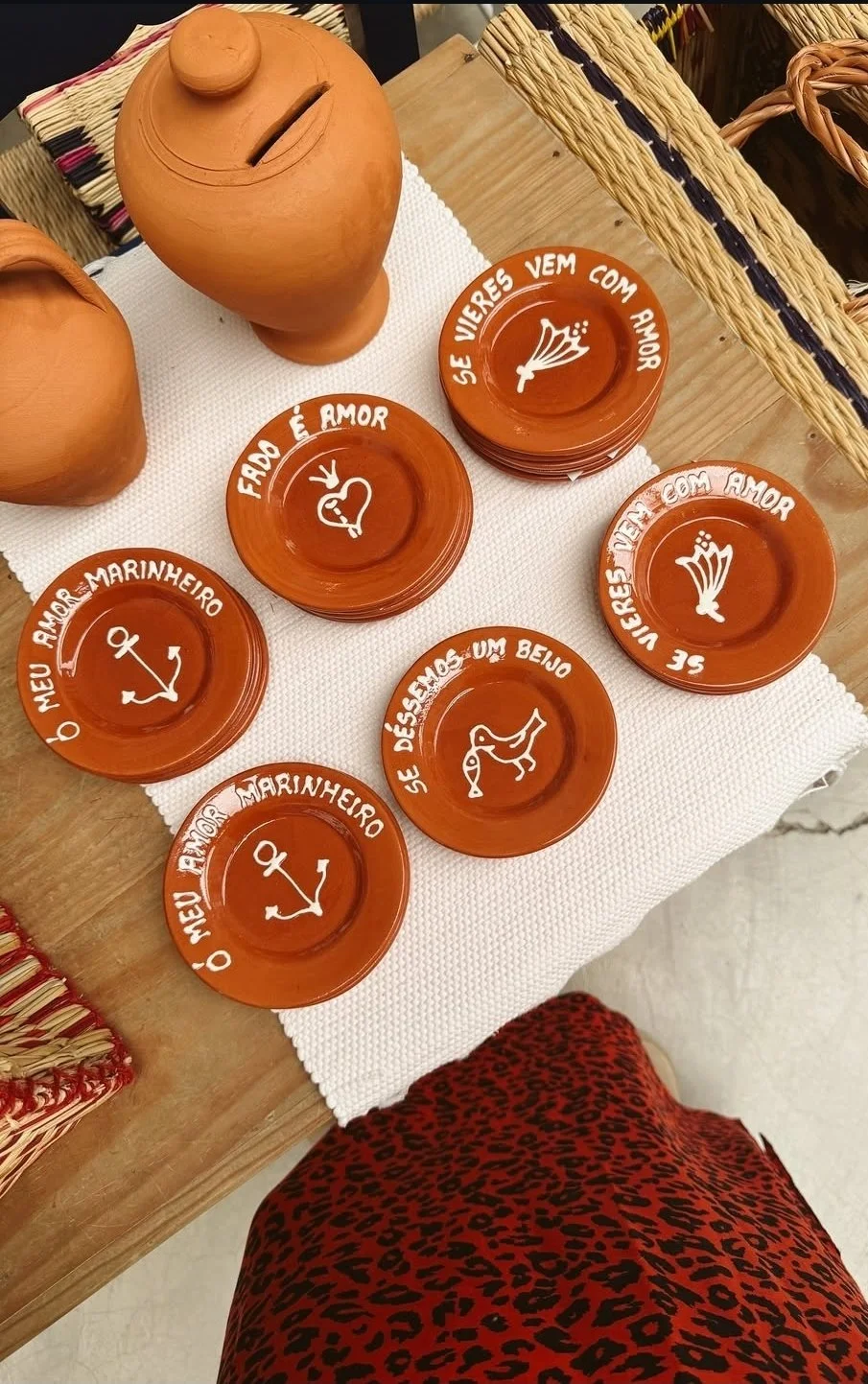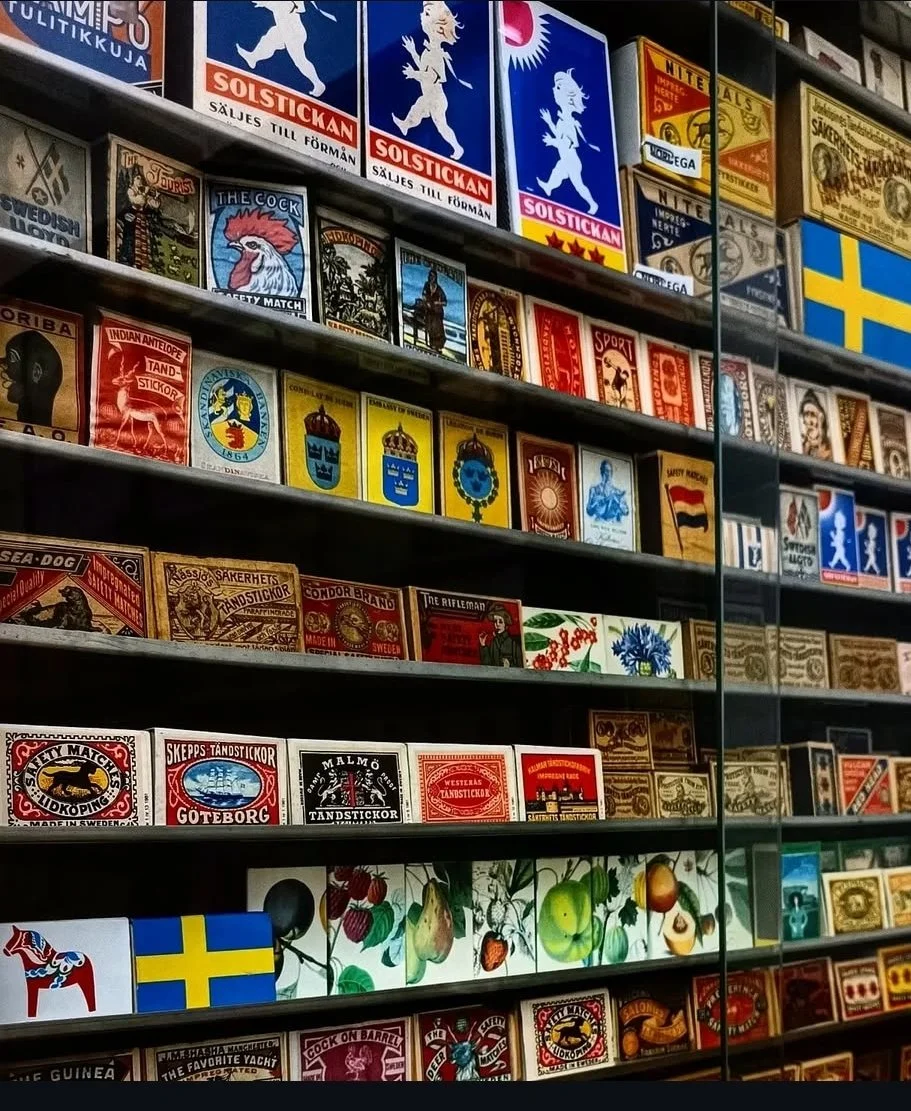Things to Do in Tomar, Portugal: Slow Travel, Templar History & Local Tips
Not many people talk about Tomar - and that’s exactly what makes it worth talking about now.
Tucked away in central Portugal, about 90 minutes north of Lisbon by train, Tomar is a small town that quietly holds one of the country’s most fascinating stories. It was once the headquarters of the Knights Templar, and the legacy is still visible everywhere: from the massive convent overlooking town to the stone symbols etched into walls you might walk past without noticing.
But history isn’t the only reason to come. Tomar is a place that invites you to slow down. It’s walkable, peaceful, and refreshingly untouristy - even today. You can start your day with coffee by the river, explore winding backstreets without needing Google Maps, and spend the afternoon in a shady park with nothing scheduled. It’s that kind of town.
Tomar is a great fit if you’re looking to experience Portugal beyond the busy coastlines and city crowds. It’s perfect for solo wanderers, couples chasing slow mornings and long lunches, history lovers who don’t want to be herded through rope lines, and anyone who believes the best parts of a trip usually aren’t the ones you plan. You won’t find big attractions with long lines here - but if you love meaningful details, friendly locals, and places that don’t feel staged, you’ll probably fall for it.
In this guide, you’ll find everything you need to make the most of your time in Tomar: from how to get there and where to stay, to what to eat, what not to miss, and where to just sit and be. Because this isn’t the kind of place you rush through.
How to Get to Tomar
Tomar is easy to reach, even if you don’t plan to rent a car - and in many ways, it’s better that way. The town is compact, walkable, and public transit-friendly, which makes it ideal for travelers who prefer to move at their own pace.
By train:
The easiest way to get to Tomar is by train. There’s a direct regional line from Lisbon’s Santa Apolónia or Oriente stations, and the journey takes around 1 hour and 45 minutes. Trains are comfortable, affordable, and run several times a day. Once you arrive, the station is just a 10-minute walk from the historic center (no transfers or taxis needed).
Tip: Sit on the right side of the train for some lovely countryside views as you leave Lisbon behind!
From Porto:
If you’re coming from the north, you can take a train from Porto to Entroncamento, then transfer to a local train to Tomar. It takes about 3.5 hours total, but the ride is scenic and straightforward.
By bus:
Long-distance buses also run to Tomar from major cities like Lisbon and Coimbra. Rede Expressos and FlixBus both have routes. The bus station is slightly farther from the center (around 15 minutes on foot), but still very manageable.
By car:
If you prefer to drive, Tomar is around 1 hour and 30 minutes from Lisbon via the A1 highway. Parking is usually easy and inexpensive, especially on the edge of the old town. A car can be helpful if you plan to explore nearby villages, hiking trails, or the natural parks around the region - but you don’t need one to enjoy Tomar itself.
What to Expect When You Arrive in Tomar, Portugal
Tomar doesn’t make a big deal about itself… and that’s one thing we love about the destination.
Step off the train and you’ll find a small, easygoing station with just enough signage to point you in the right direction. No crowds. It’s about a 10-minute walk into town, and the path is simple: a few quiet streets, some everyday apartment blocks, and then, suddenly, you're by the river.
That’s when Tomar starts to show itself. The Nabão River runs straight through the center, crossed by arched stone bridges and lined with low buildings that haven’t changed much in decades. You’ll pass tiled façades with chipped paint, laundry hanging from balconies, and a handful of cafés that feel more local than curated.
The town has a calm energy - not sleepy, just sure of itself. People take their time. Conversations happen in the street. It’s small enough that you’ll get your bearings fast, but interesting enough that you’ll want to loop back through the same streets again later.
If you’re arriving from Lisbon or Porto, the contrast is noticeable. There’s space. There’s quiet. There’s no pressure to get anywhere fast. That first hour in Tomar tells you everything you need to know: this is a place to slow down, for real.
Visiting the Convent of Christ in Tomar: A Complete Slow-Travel Guide
The Convent of Christ (Convento de Cristo) is one of the most significant Templar sites in Europe and a designated UNESCO World Heritage Site. But despite its historical weight, it rarely feels busy. You can take your time here, and you should.
Set on a wooded hilltop above town, the complex is sprawling. It blends Romanesque, Gothic, Manueline, Renaissance, and Baroque architecture - a testament to its centuries of continuous use and adaptation. Originally built as a Templar stronghold, it later became the base of the Order of Christ, who helped finance and guide Portugal’s maritime explorations in the 15th and 16th centuries.
Here’s what not to miss inside:
The Charola: This round church was modeled after the Church of the Holy Sepulchre in Jerusalem. It’s dark, echoey, and beautiful in an austere way. You stand in the center, and everything feels circular and centered - like a space built for both prayer and protection.
The Manueline Window: On the western wall of the chapter house, this is the most famous example of Manueline architecture in Portugal. It’s bold, intricate, overgrown with symbolism (ropes, leaves, coral, and crosses) all carved in stone.
Cloisters and corridors: There are eight cloisters here, each from a different time period. Some are crumbling and mossy, others airy and open. Walk slowly through them all, and you’ll notice how the mood changes from one to the next.
What makes this place especially powerful is the quiet. There are no crowds being herded through. Just stone, arches, filtered light, and the occasional chirp of a bird echoing through 800-year-old walls.
Practical info: Tickets are €6 and can be bought on site (cash or card). The site opens at 9am. Arrive early to avoid tour groups and enjoy the space with minimal noise.
Take the Forest Path: Mata Nacional dos Sete Montes
Instead of heading straight back into town from the convent, take the forest path that leads down through the Mata Nacional dos Sete Montes (National Forest of the Seven Hills). This greenbelt was once part of the Templars’ land and is now a protected area with quiet walking trails, olive groves, and shaded stone benches.
It’s not a tourist attraction in the traditional sense, which makes it perfect. You’ll pass local dog walkers, students with sketchbooks, maybe someone reading under a tree. The path winds down toward the old town, eventually spitting you out near the Nabão River.
It’s an ideal place to sit and journal, read, or just take a break from sightseeing. And it’s a reminder that Tomar’s historic sites aren’t walled off, they blend into the town’s daily life.
Why Tomar Is One of Portugal’s Most Authentic Historical Towns
What makes Tomar special isn’t just the quality of its historical sites - it’s how little those sites feel separated from daily life. The Templar cross is everywhere: carved into stone walls, embedded in tiles, painted above doorways. Locals don’t treat the convent like a museum. It’s just part of the town.
Even the layout of the historic center reflects Templar ideals, with Rua Serpa Pinto (once part of a Templar pilgrimage route) acting as the spine of the town grid. The Praça da República, still the main square, was designed to represent the earthly balance of power between church and state - with the church on one end and the town hall on the other.
Tomar isn’t frozen in time, and that’s what gives the place so much character.
Exploring Tomar’s Old Town on Foot: Why Wandering Is the Best Thing to Do Here
Some towns are made for wandering, and Tomar is absolutely one of them. You don’t need a guide or a plan. In fact, the less you plan, the better it gets.
The pace here is slower by design. Streets are walkable, distances are short, and there’s always a bench nearby if you feel like doing nothing for a while. You could spend an afternoon covering just a few blocks - not because it’s difficult, but because there’s so much texture to notice when you’re not rushing through it.
Most people start with Rua Serpa Pinto, the pedestrian street that cuts through the old town. It’s where you’ll find tiled façades, bookshops, the occasional artisan store, and those classic pastel-painted buildings that look like they were designed to be photographed - except no one’s really doing that. There’s not much posing or staging in Tomar. Locals are just going about their business: chatting at the bakery, carrying laundry baskets, leaning in doorways while talking on the phone.
But don’t stop with the main drag. The real mood of Tomar lives in its side streets. Take any left or right and you’ll probably find something you weren’t expecting, like a small courtyard, an open window with Fado music drifting out, a tiny garden behind an old iron gate. You might pass a grandmother sitting outside peeling vegetables, or stumble onto a back alley with a handmade mosaic embedded in the stone wall.
At some point, you’ll end up at Praça da República, the town square. You’ve got the church on one end, a line of trees on the other, and just enough cafés around the edge to keep it lively. It’s where everyone crosses paths - school kids, retirees, people walking home with groceries. If you order a coffee here, no one will ask if you want it to go. People sit. They talk.
One of the best things about walking around Tomar is how little you need to think about it. There are no subway stations or traffic-filled crossings to navigate. It’s the kind of place where you can spend a whole morning doing nothing in particular and still feel like your day was full.
The town isn’t big (you can walk from one side to the other in 20 minutes) but it stretches in small ways. You’ll revisit the same streets more than once, and still catch something new. A hand-painted tile you missed before. A bakery you suddenly smell. A quiet doorway you feel like photographing now, even if you didn’t notice it the first time.
And that’s the thing: Tomar gets better the slower you move. It’s here to be lived in - and if you give it a little space, it’ll make you feel like you belong there, too.
Where to Stay in Tomar, Portugal: Boutique Hotels, Guesthouses, and Slow Travel Stays
Tomar keeps things simple when it comes to accommodation - and that’s a good thing. You won’t find big-name hotel chains here, and there are no resort complexes trying to be something they’re not. What you’ll find instead are boutique hotels with character, quiet guesthouses, and locally run stays that fit perfectly with the pace of the town.
This is a place for travelers who want comfort without flash, design that doesn’t feel overstyled, and locations that let you walk everywhere without thinking twice.
Best Boutique Hotels in Tomar’s Historic Center
If you want to stay right in the middle of town (where everything’s within walking distance) these boutique hotels are a great starting point.
Thomar Boutique Hotel
Location: Just across from the Nabão River, a short walk from the main square and old town.
This is one of the most established small hotels in Tomar, and it blends modern comfort with a sense of place. Rooms are bright, clean, and quiet, with some offering river views. There’s even a rooftop lounge with panoramic views of the town and convent. It’s a great pick if you want something central but calm, with just enough hotel polish to feel looked after.
Hotel República
Location: Directly on Praça da República - the heart of the old town.
If you prefer a design-focused stay with a touch of luxury, this small hotel offers modern interiors, spacious rooms, and soundproofing that actually works - a plus if you're staying right on the square. Rooms have hardwood floors, minimalist decor, and thoughtful touches like in-room espresso machines. You’re truly in the center of it all, but the noise doesn’t follow you inside.
Quiet Guesthouses and Locally Run Stays in Tomar
If you prefer something a little smaller and more personal, Tomar has a handful of excellent guesthouses and “Alojamento Local” options - which are independently owned and often offer a more relaxed, home-like vibe.
Casa dos Ofícios
Location: A few steps from Rua Serpa Pinto, tucked down a quiet side street.
This restored 18th-century house leans into local heritage, with each room themed around a traditional Portuguese craft. The atmosphere is peaceful, the beds are comfortable, and the owners clearly care about the experience. Breakfast is included and often features local produce and homemade pastries. It's a great choice for travelers looking for authentic touches without sacrificing comfort.
Central Family Palace
Location: Close to the river, about five minutes on foot from the Convent of Christ.
Housed in a 17th-century building, this stay has a little more space than most - high ceilings, large windows, and private balconies in some rooms. Interiors are clean but simple, and the location is ideal if you want to be near green space and walking paths without being too far from the cafés and restaurants in the center.
Choosing the Right Area to Stay in Tomar
Tomar is compact, but your experience will change slightly depending on where you stay. Here’s a quick overview of the best areas:
Historic Center (around Praça da República): Best for walking, local cafés, and being close to everything. Great for short visits or travelers without a car.
Near the Nabão River: A quieter alternative with scenic views, still walkable to the main square. Ideal if you want early morning walks or riverside cafés.
Uphill, near the Convent of Christ: A good option for nature lovers or anyone looking for a peaceful setting, though you’ll need to walk downhill (and back up) for meals and shops.
What to Eat in Tomar, Portugal: Local Dishes, Restaurants, and Where to Find the Best Fatias de Tomar
Tomar isn’t the kind of place where people talk about “the food scene.” And honestly, that’s what makes eating here feel so good. There are no trendy spots with clever menus or dishes made for Instagram. Just cafés that have been around forever, meals that show up on the table the same way they have for decades, and a local dessert so rich it could stop time.
If you travel for flavor, comfort, or just the kind of meals that make you want to linger a little longer, you’ll eat well here. This is what to try in Tomar, where to find it, and how to enjoy it without rushing.
Traditional Food in Tomar: What to Look For
Tomar’s regional food leans rustic and honest, built around garlic, olive oil, bread, and long-simmered meats. Even the sweets come from centuries-old convent recipes.
A few must-try dishes:
Fatias de Tomar – A rich egg yolk dessert sliced thick and served cold. It’s sweet, dense, and surprisingly filling.
Cabrito Assado – Roast kid goat with potatoes and herbs. Usually offered on weekends or holidays.
Migas à Alentejana – A savory mix of bread, garlic, olive oil, and sometimes pork (served alongside grilled meat or sausages).
Grilled dourada or sea bass – Not unique to Tomar, but always fresh, simple, and worth ordering.
Best Restaurants in Tomar, Portugal: Where to Eat Slowly and Well
Tomar isn’t packed with restaurants, but that works in its favor. The best meals are found in side streets, small taverns, and family-run spots where nothing feels rushed and the food is made with care. Here are three that fit the slow-travel rhythm perfectly.
Taverna Antiqua – Medieval Setting, Honest Food
Just off Praça da República, Taverna Antiqua could have gone full tourist gimmick with its medieval theme - but it didn’t. Instead, it leans into the stone-cellar atmosphere and serves genuinely good food. The pork cheeks braised in red wine are excellent, the octopus rice is rich and filling, and the craft beers are worth sampling. Go early in the evening or on a quieter weekday if you’d prefer a calm, candlelit dinner without the bustle.
O Tabuleiro – Simple Lunches on Rua Serpa Pinto
If you want something straightforward, O Tabuleiro is the local go-to for lunch. It’s casual, reliable, and doesn’t overcomplicate things: grilled fish, homemade soups, daily specials that change with what’s fresh. Nothing fancy, just Portuguese comfort food in the middle of the pedestrian street. It’s a good stop when you want a quick but satisfying break between walks.
Casa Matreno – A True Local Tavern
This small, family-run tavern feels more like eating at someone’s home than a restaurant. The menu is short, but the dishes are hearty: grilled meats, stews, seasonal sides, and plenty of wine poured without ceremony. Service is unhurried, the interior is cozy, and it draws a mostly local crowd. It’s exactly the kind of place where you can take your time over dinner and leave feeling like you experienced Tomar at its most genuine.
Where to Try the Best Fatias de Tomar
Tomar’s signature dessert (fatias de Tomar) is best eaten at Estrelas de Tomar, a small, traditional pastry shop near the center. It’s the kind of place where the owners know what you’re going to order before you do.
Pair the fatia with a bica (small espresso), find a quiet table, and take your time. The texture is like nothing else: silky, eggy, and rich in a way that feels oddly celebratory, even on a regular weekday.
You can also find fatias at other pastelarias in town, especially along Rua Serpa Pinto and near the market, but Estrelas is still the classic.
Cozy Artisan Cafés in Tomar, Portugal: Best Spots for Coffee and Slow Afternoons
If you’re after cafés in Tomar that invite you to pause, chat softly, or linger over a book, here are two gems that truly deliver that atmosphere:
Café Paraíso
A century-old local favorite, Café Paraíso still feels like someone made it just for mornings. Its Art-Deco interior and high ceilings are instantly calming, and the staff seem to remember every regular by name. Order a galão (milk coffee) and a tosta (cheese and tomato on hearty bread). Don’t be fooled by the quiet façade—it’s a place that stays open socially well into the night
Insensato Café-Livraria
Less than a 10-minute walk from the center, this café-bookstore blends thrift-store style with bohemian calm. Think mismatched chairs, whitewashed walls, and soft light filtering over vegan cakes and carefully sourced artwork. It’s a lovely stop for afternoon tea or a light, gluten-free snack.
Shopping for Local Food in Tomar: Markets, Snacks, and Picnic Picks
If you're staying in an apartment or guesthouse in Tomar, or you just like picking up fresh food while you travel, head to the Mercado Municipal de Tomar. It's open most mornings, but Saturday is the busiest and best day to go - that’s when more local producers set up stalls, and the selection gets better.
The market is just outside the historic center and easy to walk to. It’s simple, local, and not geared toward tourists… which means prices are fair and the food is actually what locals buy for the week.
Here’s what’s worth picking up:
Sheep’s cheese from the region — often strong and salty, but you’ll also find milder varieties.
Fresh bread, sold loose or in paper bags. Grab it early if you want it still warm.
Seasonal fruit and vegetables, all from nearby farms. What’s available changes often, but you can usually count on tomatoes, greens, oranges, or figs depending on the season.
Local olive oil, cured olives, honey, and jam, sometimes sold by small producers at the back of the market.
If you’re putting together a picnic in Tomar, this is where to do it. You’ll find everything you need to build a simple lunch and head to the river or the park. No need to overthink it! Bread, cheese, fruit, and something sweet is more than enough.
A Few Notes on Eating in Tomar
Meals take time. You won’t be rushed, and you shouldn’t rush. Even lunch can stretch past an hour.
Most places close between 3pm and 7:30pm. Plan ahead — this isn’t an all-day dining town.
Vegetarian? Ask. It’s not always on the menu, but many places will adapt.
Portions are generous. If in doubt, share.
Moving Slower in Tomar: Little Things That Make the Days Better
Some towns just feel better when you do less. Tomar is one of them.
You could spend hours walking the same few streets, not because there’s so much to see, but because things feel a little different each time you pass. The light shifts. A café opens its shutters. Someone new shows up on the bench by the river. It’s the kind of place that rewards you for sticking around.
Here are a few low-key routines that make sense here:
Go to the Saturday market, even if you don’t need anything. Just walk through and notice what’s in season, what people are buying, how everyone seems to know each other.
Step into the municipal library for a few quiet minutes. You don’t need to speak Portuguese to enjoy the calm, the old wooden shelves, the cool air.
Take the long route through Sete Montes Park, especially in the late afternoon when the sun drops between the trees. You don’t need a reason to go - just go.
Stop at the small craft shops near the center. Some still sell cork goods, tiles, or handwoven things that aren’t made for tourists. If the person behind the counter made it, ask them about it.
You don’t need a full itinerary in Tomar. One or two good things each day is plenty, and the rest takes care of itself.
Nature Near Tomar: Quiet Walks, Forest Trails, and Easy Escapes
Even if you don’t think of yourself as someone who “does nature,” Tomar makes it easy to spend time outside without turning it into an event. You don’t need gear or a packed schedule - just a morning, a bottle of water, and maybe something from the market in your bag.
Here are a few easy ways to get into the green without leaving the town’s rhythm behind.
Mata Nacional dos Sete Montes (Seven Hills Forest)
This park sits right behind the Convent of Christ, and it’s probably the easiest place to get a nature fix without leaving Tomar at all. Locals come here to walk dogs, read under the trees, or just stretch their legs before dinner. The paths are unpaved but manageable, winding through pine, cypress, and olive trees.
You’ll find a few benches, old stone walls, and little side trails that lead nowhere in particular - which is kind of the point. Bring a book, a pastry, or nothing at all.
Riverside Paths Along the Nabão
The Nabão River cuts straight through town, and you can follow it on foot in either direction. The walk toward the old water wheel and Mouchão Park is flat, easy, and lined with trees. It’s great for early mornings or just stretching your legs after lunch.
You’ll pass quiet bridges, fountains, and plenty of spots to sit. It’s not a dramatic landscape, but it’s peaceful - and it gives you a different view of Tomar that’s not all stone and history.
Short Day Trips into the Countryside
If you want to go a little further out (but not too far), you’ve got options.
Castelo de Almourol – A very pretty castle on an island in the Tagus River. You take a short boat ride to get there, and often have the whole place to yourself. About 40 minutes by car or regional train.
Serra de Aire e Candeeiros Natural Park – For something more open and rugged. Rolling limestone hills, caves, and scenic trails. Good for a longer hike or a half-day escape, especially if you’ve got a car or don’t mind a taxi ride.
Tomar isn’t a mountain town or a coastal escape - but it doesn’t need to be. It gives you space. Shade. Paths that let you wander. And enough quiet to remind you why you came.
Shopping in Tomar: Independent Shops, Local Crafts, and Easy Finds
Tomar isn’t the kind of place where you spend a whole afternoon shopping - and that’s probably why it works. There aren’t rows of trendy boutiques or curated souvenir stores. But there are a handful of independent shops worth ducking into when you’re wandering the old streets, especially if you like things made locally, or at least with a little intention behind them.
You’ll find small shops with handmade linens, cork goods that aren’t mass-produced, a few Portuguese ceramics, and simple things like notebooks, soaps, or locally illustrated prints. Nothing flashy. Just quiet little places doing their thing.
Here’s where to look:
Local Crafts and Handmade Goods
On or just off Rua Serpa Pinto, there are a few small shops that sell cork accessories, traditional embroidery, hand-painted tiles, and woven baskets. Some of it leans traditional, some of it more modern - but most of it’s local or regional, and the shop owners usually know where everything comes from.
You probably won’t see the same items twice, which is part of the charm.
A Few You Might Walk Right Past (But Shouldn’t)
There’s a design shop near Praça da República that sells ceramics, prints, soaps, and notebooks - all made by Portuguese artists and designers. It’s called Tomar de Cor, and it’s small, but full of genuinely nice things that would make good gifts (or the kind of souvenirs you actually keep).
Also worth a stop: a low-key stationery shop near the old town that still sells journals, paper, and postcards the old way - shelves packed, everything behind glass, no rush. If you like browsing for the sake of it, you’ll feel at home there.
If You're in Town on the Right Day
If you happen to be in Tomar on the second Sunday of the month, there’s a small antique and flea market along the river. It’s not big, but you might find old Portuguese ceramics, vintage postcards, coins, or books. Most of it’s secondhand and very local: not staged or curated, just a real community market.
Museums and Galleries in Tomar You’ll Actually Remember
Museu dos Fósforos (Matchbox Museum)
Housed in a 17th-century cloister not far from the train station, this quirky little museum quietly holds tens of thousands of matchboxes from all over the world. It’s oddly comforting - a reminder that beauty and history can come from something as simple as matchbox art. Bonus: it’s free and easy to walk through, making it a breezy way to feel connected to a local collector’s curiosity.
Núcleo de Arte Contemporânea (Municipal Art Museum)
Tucked behind the old convent, this compact gallery holds a rotating collection of modern Portuguese artworks - paintings, prints, and sculptures collected over the last century. It’s quiet, reflective, and just the right size when you want a dose of creative energy without pretension.
Abrão Zacuto Synagogue & Portuguese-Hebrew Museum
This historic synagogue is part architectural gem, part time capsule. You’ll find headstones dating back centuries, inscriptions in Hebrew, and remnants of a mikveh. It’s more than a museum. It’s more of a quiet reflection on a community that helped shape the town.
Templar Interpretation Center
If you’re still curious about the layers of history in Tomar (from paleolithic times through to the present) this small center puts it all into context. Think of it as background music for the town’s older sites.
Why Visit Tomar, Portugal
As more travelers look beyond Lisbon and Porto for authentic, slow-paced travel in Portugal, Tomar is starting to quietly show up on the map - not because it’s trending, but because it makes sense. It’s the kind of place that offers culture without crowds, beauty without the pressure to check things off, and history that still feels human-sized.
You won’t find a packed itinerary here. No must-do lists or flashy attractions. But you will find space - to walk, to notice things, to breathe a little easier. And today, that might be exactly what more travelers are searching for.
If you're planning where to go in Portugal this year and want something quieter, more grounded, and more personal, Tomar is worth the detour. Come not to be impressed, but to feel a place that still moves at its own pace.
More slow travel guides you might enjoy…
If Tomar fits the kind of travel you’re after, here are a few more peaceful places to explore next:
The Hidden Charm of Ljubljana – A peaceful capital with riverside cafés, leafy walks, and more soul than skyline.
A Cozy Spring Weekend in Copenhagen – Hygge moments, quiet corners, and soft light by the canal.
Ireland’s Secret Villages – Quiet escapes for travelers who prefer misty mornings to crowded tours.
Menton, France: Sunshine & Citrus – Slow days on the French Riviera with fewer yachts and more lemon trees.
FAQ: Visiting Tomar, Portugal in 2025
Is Tomar worth visiting?
Yes! Especially if you’re drawn to places with real character and no tourist overload. Tomar is one of the few towns in Portugal where you can explore Templar history, walkable old streets, and riverside cafés without feeling rushed or crowded. It’s not for checklist travelers - it’s for people who value atmosphere, history, and a slower pace.
How many days do you need in Tomar?
Two to three days is ideal. That gives you time to visit the Convent of Christ, wander the Sete Montes Forest, explore the riverside, and enjoy slow meals without trying to squeeze everything in. Tomar also works well as a longer base if you want to explore nearby towns like Constância or the Almourol Castle on easy day trips.
How do you get to Tomar from Lisbon?
You can take a direct regional train from Lisbon’s Santa Apolónia or Oriente stations. The journey takes around 2 hours, and the trains are comfortable and affordable. Once you arrive in Tomar, the town is walkable - no car needed unless you're planning countryside excursions.
Is Tomar safe for solo travelers?
Very. Tomar is a small, quiet town with a friendly, local feel. It’s common to see people walking alone at night, and solo travelers often say they feel comfortable here. Like anywhere, basic awareness goes a long way, but Tomar is a good fit for independent travelers who want to explore without feeling overwhelmed.
What is Tomar known for?
Tomar is best known for the Convent of Christ, a UNESCO World Heritage Site and former stronghold of the Knights Templar. But beyond that, it’s known for its historic old town, peaceful pace, and signature dessert - the fatia de Tomar, made almost entirely from egg yolks and sugar.
Is Tomar a good destination for slow travel?
Absolutely. Tomar fits slow travel in Portugal better than most towns its size. It's easy to walk everywhere, there’s plenty of local life to observe, and nothing is designed to rush you along. It’s a town that welcomes wandering - and gives you time to enjoy the in-between moments, not just the highlights.
What are the best things to do in Tomar?
Some of the most memorable things to do in Tomar include:
Exploring the Convent of Christ and Templar castle
Strolling through the Sete Montes Park
Visiting the local market on a Saturday morning
Sitting by the Nabão River with coffee or picnic supplies
Browsing independent shops for handmade crafts or ceramics
Trying the town’s signature pastry at a small café
None of these need to be rushed - which is what we love about Tomar.


